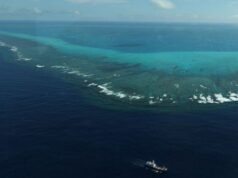Bohol is latest stop for Cebu Pacific’s sustainable tourism campaign
THE ECONOMY of Bohol — home to the Chocolate Hills, tarsier, white-sand beaches, and various cultural and heritage sites — has been driven largely by tourism. And that comes with the strains to the island province’s environment. “Tourism is the number one source of revenue in the province… In fact, the impressive drop of poverty incidence of 50.2% in 2000 to 15.2% this year is primarily attributed to the growth of our tourism industry,” said Provincial Administrator Kathyrin D. Piquinto in an interview Friday during the launch of Cebu Pacific’s campaign on sustainable tourism. Ms. Piquinto said Bohol is fortunate to have various and unique natural attractions, but it must also continuously take measures to ensure their protection and avoid the pitfalls of overtourism. “Bohol is one of the best island-destinations in the world, and one of CEB’s (Cebu Pacific) most popular destinations. There is still time to preserve its beauty by flying in tourists who are aware of the impact they create when they travel,” said Candice A. Iyog, the budget airline’s vice president for marketing and customer experience.
BALANCE
The company’s “Juan Effect” campaign, introduced earlier in Siargao and Boracay, engages the local community, local government, and tourism stakeholders in educating travelers about their responsibilities as tourists. In Bohol, the program was started with the installation of signages at the most visited spots to remind visitors to take care of the island’s natural beauty. The signs, made in part using wood from old boats left as trash along Panglao’s beaches, are in English, Korean, Japanese, Chinese. “We acknowledge that tourism can be a great economic driver creating jobs and opportunities for people across all demographics. But we also recognize that this can have unintended consequences like pollution, environmental degradation, disregard local cultures, among others,” Ms. Iyog said. Tourism Undersecretary Arturo P. Boncato Jr. said the Department of Tourism’s goal is finding the balance between increased arrivals and sustainable tourism. He said, “We are now faced with this challenge of a balance of increasing tourists while we are protecting the environment… We would like to increase that (arrivals) but we would like to bring you to destinations that are ready for you.” — Maya M. Padillo



